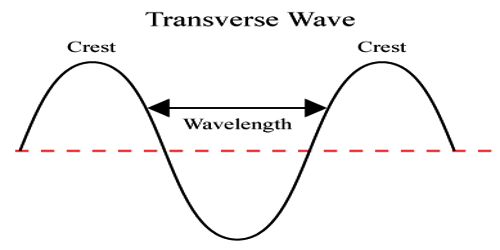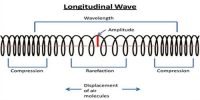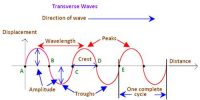Characteristics of transverse waves
When the particles of the medium vibrate about their mean positions perpendicular to the direction of propagation, then the wave is called transverse wave. It is a wave vibrating at right angles to the direction of its propagation.
Following characteristics are observed for a transverse wave –
- In case of a wave, if the oscillation of the particles of the medium becomes perpendicular to the direction of propagation of the wave, then that wave is called transverse wave.
- A transverse wave progresses as a series of crests and troughs.
- Distance between two successive crests or troughs is called wavelength.
- Polarization of the medium takes place.
- Due to the elastic characteristic of the solid medium this wave is produced in solid medium and due to surface tension of the fluid medium transverse wave is produced.
- Energy will begin to be transported through the slinky from left to right. As the energy is transported from left to right, the individual coils of the medium will be displaced upwards and downwards.
Transverse waves are constantly characterized by particle motion being perpendicular to wave motion. A longitudinal wave is a wave in which particles of the medium move in a direction parallel to the direction that the wave moves.














